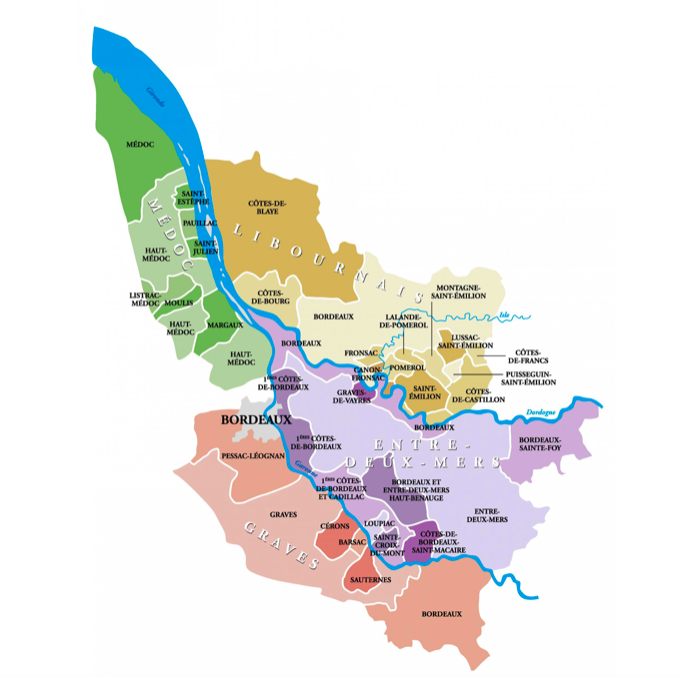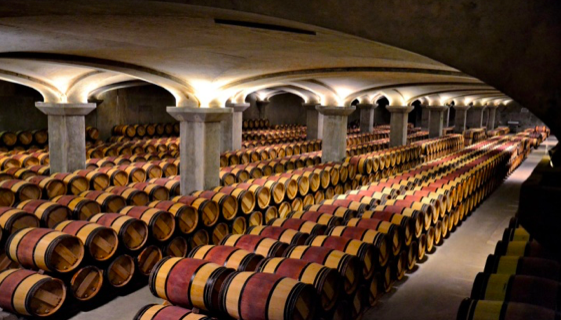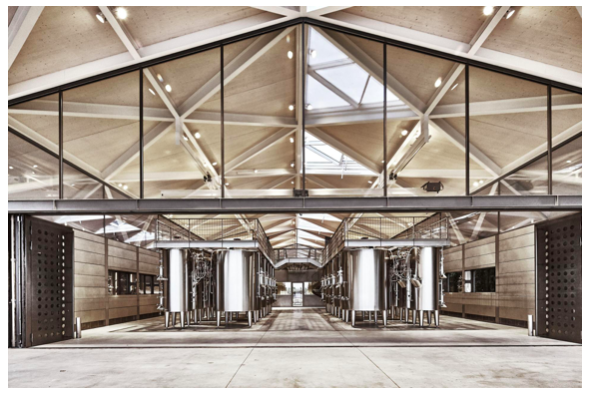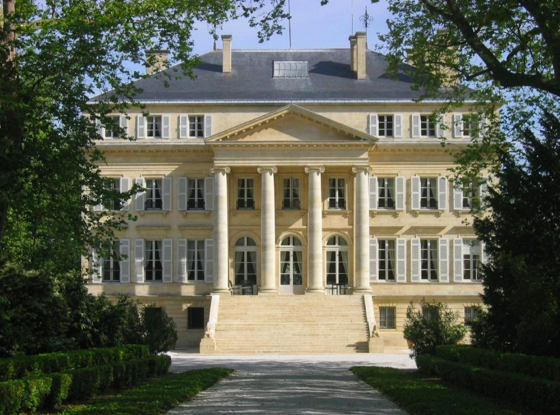Lifestyle
Charles Winn gives the Lowdown on the World’s ‘Fine Wine’ Capital

The majority of the world might remain in lockdown amid the ongoing coronavirus pandemic, but for some industries life must continue as normal, such as for ‘fine wine’. Whilst the rest of the world locks down, in Bordeaux – the fine wine capital of the world – producers are hard at work preparing their crops for the next season.
Geography
A port city on the Garonne River in southwestern France, Bordeaux is renowned globally for its famous wine-growing regions. A river runs directly through the region, and on the West side sits Gironde and Garonne. Typically, these regions are known for wines such as Sauvignon. On the East side of the river nestles Dordogne, known primarily for Merlot.
In total, Bordeaux has 57 grape-growing regions making it the biggest wine producer in France. Originally made famous for its popularity with kings, nowadays, Bordeaux and its chateaus are popular tourist attractions.
The Wines
As one of the biggest wine-makers in the world, you might expect Bordeaux to produce a diverse range of different type of wines. However, more than 90% of the wine produced here is actually red, with the region specifically producing Cabernet Sauvignon, Cabernet Franc, Merlot, Petit Verdot, Malbec and Carménère.
Having said this, in 2019 Bordeaux’s regulatory body approved four additional dark grape varieties to add to the list: Marselan, Touriga Nacional, Castets, and Arinarnoa.
Bordeaux’s First Growth wines (the term for a wine made specifically made in Bordeaux) are made by blending 70% Cabernet Sauvignon, 15% Cabernet Franc and 15% Merlot. In contrast, the White Bordeaux is made from Sémillon, Sauvignon Blanc and Muscadelle.

The History
Bordeaux’s wine-making history stretches back over many centuries. In 1855, the Association of Bordeaux Wine Merchants established official classification and certification of the wines after Emperor Napoleon III requested that they do so.
Ranking the wines from First Growths to Fifth Growths, the merchants evaluated market prices based on an evaluation of the previous years. They noticed that red wines which made the list came from the Médoc region, except for one: Château Haut-Brion from Graves.
Since this original classification in 1855, there have only been two changes. In 1856, Château Cantemerle was added as a Fifth Growth and in 1973, Château Mouton Rothschild was promoted from Second Growth to the elite First Growth classification. The latter change is a wine much loved and highly ranked by Charles Winn and its customers.

Château Margaux
Global flavour
It didn’t take long for the popularity of Bordeaux wine to grow all over the world. After King Henry II’s marriage to Eleanor of Aquitaine in 1152, an interest in wine from the Bordeaux region was prompted in England.
The marriage established the province of Aquitaine within France and England, and a new dark rosé wine was created, called ‘Claret’. This wine soon became the most common wine to be exported to Britain.
After the battle of Castillion in 1453, the Aquitaine region returned to the French. Since then, the word ‘Claret’ became anglicised and is still widely used today, due to the global popularity of the wine.

The exterior of the château
Lifestyle
Wanda Knight on Blending Culture, Style, and Leadership Through Travel

The best lessons in leadership do not always come from a classroom or a boardroom. Sometimes they come from a crowded market in a foreign city, a train ride through unfamiliar landscapes, or a quiet conversation with someone whose life looks very different from your own.
Wanda Knight has built her career in enterprise sales and leadership for more than three decades, working with some of the world’s largest companies and guiding teams through constant change. But ask her what shaped her most, and she will point not just to her professional milestones but to the way travel has expanded her perspective. With 38 countries visited and more on the horizon, her worldview has been formed as much by her passport as by her resume.
Travel entered her life early. Her parents valued exploration, and before she began college, she had already lived in Italy. That experience, stepping into a different culture at such a young age, left a lasting impression. It showed her that the world was much bigger than the environment she grew up in and that adaptability was not just useful, it was necessary. Those early lessons of curiosity and openness would later shape the way she led in business.
Sales, at its core, is about connection. Numbers matter, but relationships determine long-term success. Wanda’s time abroad taught her how to connect across differences. Navigating unfamiliar places and adjusting to environments that operated on different expectations gave her the patience and awareness to understand people first, and business second. That approach carried over into leadership, where she built a reputation for giving her teams the space to take ownership while standing firmly behind them when it mattered most.
The link between travel and leadership becomes even clearer in moments of challenge. Unfamiliar settings require flexibility, quick decision-making, and the ability to stay calm under pressure. The same skills are critical in enterprise sales, where strategies shift quickly and no deal is ever guaranteed. Knight learned that success comes from being willing to step into the unknown, whether that means exploring a new country or taking on a leadership role she had not originally planned to pursue.
Her travels have also influenced her eye for style and her creative pursuits. Fashion, for Wanda, is more than clothing; it is a reflection of culture, history, and identity. Experiencing how different communities express themselves, from the craftsmanship of Italian textiles to the energy of street style in cities around the world, has deepened her appreciation for aesthetics as a form of storytelling. Rather than keeping her professional and personal worlds separate, she has learned to blend them, carrying the discipline and strategy of her sales career into her creative interests and vice versa.
None of this has been about starting over. It has been about adding layers, expanding her perspective without erasing the experiences that came before. Wanda’s story is not one of leaving a career behind but of integrating all the parts of who she is: a leader shaped by high-stakes business, a traveler shaped by global culture, and a creative voice learning to merge both worlds.
What stands out most is how she continues to approach both leadership and life with the same curiosity that first took her beyond her comfort zone. Each new country is an opportunity to learn, just as each new role has been a chance to grow. For those looking at her path, the lesson is clear: leadership is not about staying in one lane; it is about collecting experiences that teach you how to see, how to adapt, and how to connect.
As she looks to the future, Wanda Knight’s compass still points outward. She will keep adding stamps to her passport, finding inspiration in new cultures, and carrying those insights back into the rooms where strategy is shaped and decisions are made. Her legacy will not be measured only by deals closed or positions held but by the perspective she brought, and the way she showed that leading with a global view can change the story for everyone around you.
-

 Tech5 years ago
Tech5 years agoEffuel Reviews (2021) – Effuel ECO OBD2 Saves Fuel, and Reduce Gas Cost? Effuel Customer Reviews
-

 Tech6 years ago
Tech6 years agoBosch Power Tools India Launches ‘Cordless Matlab Bosch’ Campaign to Demonstrate the Power of Cordless
-

 Lifestyle6 years ago
Lifestyle6 years agoCatholic Cases App brings Church’s Moral Teachings to Androids and iPhones
-

 Lifestyle5 years ago
Lifestyle5 years agoEast Side Hype x Billionaire Boys Club. Hottest New Streetwear Releases in Utah.
-

 Tech7 years ago
Tech7 years agoCloud Buyers & Investors to Profit in the Future
-

 Lifestyle5 years ago
Lifestyle5 years agoThe Midas of Cosmetic Dermatology: Dr. Simon Ourian
-

 Health7 years ago
Health7 years agoCBDistillery Review: Is it a scam?
-

 Entertainment6 years ago
Entertainment6 years agoAvengers Endgame now Available on 123Movies for Download & Streaming for Free
